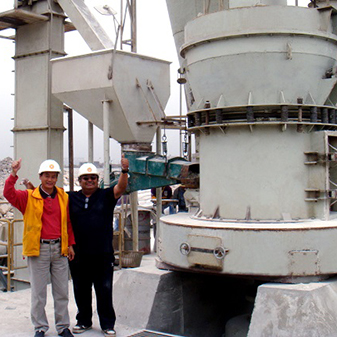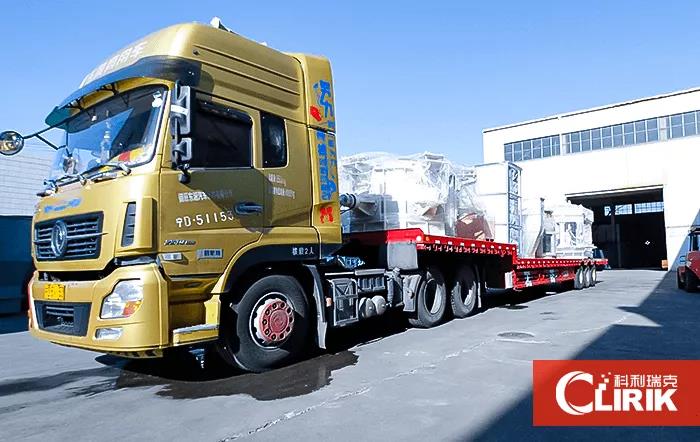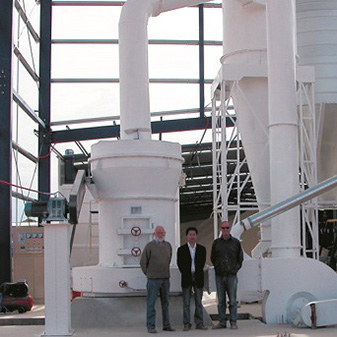The calcite ultra fine grinding mill is used for ultra-fine powder processing. The main application objects are: medium and low hardness, Mohs hardness ≤6, non-flammable and explosive brittle materials. Such as calcite, chalk, limestone, dolomite, carbon black, kaolin, bentonite, talc, mica, magnesite, illite, pyrophyllite, vermiculite, sepiolite, attapulgite, rectorite, diatomite, heavy Spar, gypsum, alunite, graphite, fluorite, phosphate rock, potash ore, pumice, etc.
The granularity of the fine powder product can be adjusted arbitrarily between 150-3000 mesh, and the output can reach 0.4-4.5 tons per hour.

The calcite mill production line usually includes hammer crusher, bucket elevator, storage bin, vibrating feeder, micro-grinding host, frequency conversion classifier, double cyclone dust collector, pulse dust removal system, high pressure fan, air compression It is composed of machine and electrical control system.
Large pieces of material are crushed by a hammer crusher into the feed size suitable for the work of the ultra-fine mill. Then, the powder is classified by adjusting the rotating speed of the mill analyzer to achieve the fineness required by the production. Finally, it is manually packed into bags, and it can also be equipped with an automatic micro-powder packing machine and choose different types of milling machines according to needs.
Performance characteristics of calcite ultra fine grinding mill
1. High efficiency and energy saving: Under the condition of the same fineness of the finished product and the same motor power, the output is more than twice that of jet mill, stirring mill and ball mill.
2. Long service life of wearing parts: the grinding roller and grinding ring are forged with special materials, which greatly improves the utilization. In the case of the same fineness of materials and finished products, the service life is 2-5 times longer than the wear parts of impact crushers and turbo crushers, generally up to more than one year. When processing calcium carbonate and calcite, the service life can be up to 2 -5 years.
3. High safety and reliability: Because there are no rolling bearings and no screws in the grinding cavity, there is no problem that the bearings and their seals are easily damaged, and there is no problem that the screws are easy to loosen and damage the machine.
4. High product fineness: The fineness of the three-ring medium-speed ultra-fine grinding product can reach D97≤5μm at one time.
5. Environmental protection and cleanness: The pulse dust collector is used to capture dust, and the muffler is used to reduce noise, which has the characteristics of environmental protection and cleanliness.

Structure composition and working environment of calcite grinding mill
The structure of calcite ultra fine mill
The main part of the calcite mill is composed of a host, a reducer, an analysis machine, a fan, a powder collector and an electric control cabinet. The auxiliary machine part is composed of jaw crusher, bucket elevator, electromagnetic vibrating feeder, storage bin, etc.
What should be paid attention to when working with calcite ultra fine grinding mill
1. Check the bearing temperature frequently. If the temperature is too high, check whether the lubrication and transmission parts are normal, and whether the rolling distance is too tight. Find out the cause in time, take corresponding measures, and stop the machine for inspection when the situation is serious.
2. Check the tightness of the transmission belt frequently. Too loose the belt will reduce the transmission efficiency and affect the grinding effect. If the belt is too tight, it will easily cause the bearing to heat up, increase power consumption and reduce the service life of the transmission belt.
3. Various transmission parts must be fastened and reliable, special tools should be used for disassembly or installation, and direct hitting with tools such as hand hammers is prohibited.
4. Always check the pneumatic components in the air circuit, air circuit and connections for air leakage or damage. At the same time, check whether the air supply pressure meets the requirements, and check the usage of the timing belt frequently. If it is found to be too tight, too loose, jumping, running off, or severely worn, it should be adjusted, repaired or replaced in time.



